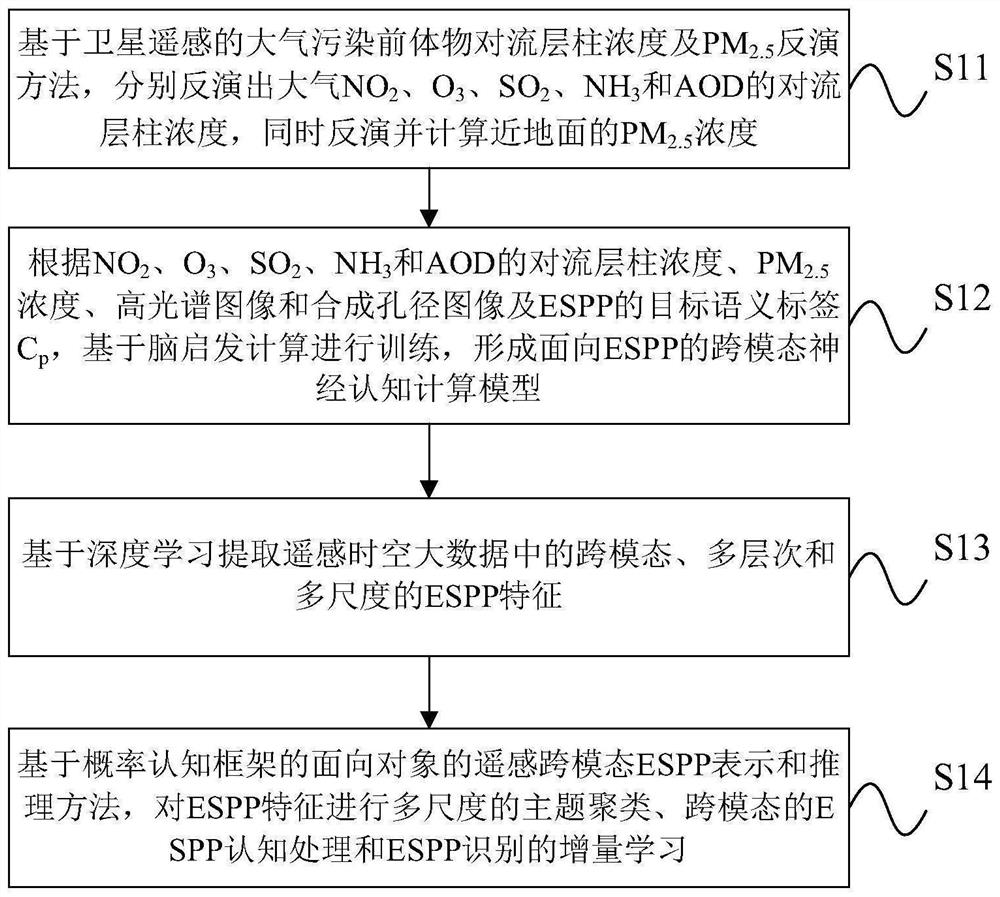Brain-like cross-modal identification and parallel processing method of pollution precursor emission source for remote sensing space-time big data
A cross-modal, big data technology, applied in the field of atmospheric remote sensing and environmental pollution, can solve problems such as low recognition efficiency
- Summary
- Abstract
- Description
- Claims
- Application Information
AI Technical Summary
Problems solved by technology
Method used
Image
Examples
Embodiment 2
[0141] As shown in the figure, the embodiment of the present invention provides another brain-inspired cross-modal identification method for emission sources of pollution precursors oriented to remote sensing spatiotemporal big data, including the following steps:
[0142] S21. Target positioning for ESPP
[0143] According to the BRD and DOAS algorithms, the atmospheric satellite monitoring data of the two time phases are inverted, and the PM in the observation area under the two time phases is calculated 2.5 Concentration distribution chart VCD PM and Concentration Profile VCD of Contamination Precursors HP . In the range of threshold δ and γ, locate the high concentration area of precursor HCD HP and PM 2.5 VCD in high concentration area PM :
[0144]
[0145] Among them, S is the spatial region and T is the time interval; through this step, it can be known that for a possible ESPP, it must be located in the space-time range HCD HP Pollutant emissions have occur...
Embodiment 3
[0158] Considering the timeliness of atmospheric environment monitoring, in the embodiment of the present invention, a hybrid heterogeneous parallel strategy is adopted to increase the speed of the BCR algorithm of ESPP and realize the application of remote sensing BCR with high recognition rate and fast speed. Such as Figure 6 As shown, the specific ideas of parallel BCR research are as follows:
[0159] S31. Task decomposition for ESPP parallel recognition
[0160] Since the remote sensing image BCR task has decomposability and data tensor structure, the preprocessed remote sensing image is used to construct a multi-resolution pyramid. Among them, low-resolution images are used for pollution source location, and high-resolution images are used for pollution source identification and verification. Slice the image layer by layer to form a data block D k . According to the nature of the task, the BCR task can be decomposed into M workflows, and each workflow consists of N ...
PUM
 Login to View More
Login to View More Abstract
Description
Claims
Application Information
 Login to View More
Login to View More - R&D
- Intellectual Property
- Life Sciences
- Materials
- Tech Scout
- Unparalleled Data Quality
- Higher Quality Content
- 60% Fewer Hallucinations
Browse by: Latest US Patents, China's latest patents, Technical Efficacy Thesaurus, Application Domain, Technology Topic, Popular Technical Reports.
© 2025 PatSnap. All rights reserved.Legal|Privacy policy|Modern Slavery Act Transparency Statement|Sitemap|About US| Contact US: help@patsnap.com



